Almaty has got more than its fair share of Soviet-era architecture. But there is a reason for this. Back in the 1970s and ‘80s, Dinmukhamed Kunayeva, a leading Kazakh Soviet communist politician of the time, convinced Moscow that, with their blessing and a serious amount of roubles, he could transform Almaty into a worthy capital of the Republic of the Soviet Union.
Securing a substantial budget for his ambitious plans was a relatively easy task for Dinmukhamed Kunayeva. He rose through the political ranks of the Communist Party at the same time as Leonid Brezhnev and the two became very good friends and staunch allies. Kunayeva was the only Central Asian politician to hold a seat on the Soviet Politburo (the highest policy-making government authority in the Soviet Union) and, when Brezhnev was given the top job as General Secretary of the Communist Party in 1964 (replacing Nikita Khrushchev), he had the right connections to steer Moscow-money in his country’s direction.
During his time many monumental buildings were constructed in what was then the capital of Kazakhstan (*); imposing structures such as Hotel Kazakhstan, the Kazakh State Circus and Medeu Sports Complex on the outskirts of the city.
(*) Astana became the new capital of Kazakhstan in 1997.
Soviet-era architecture aside, Almaty is a very pleasant city. Although sprawling, it is laid out on a grid system and very manageable. There is plenty of green space and generally, Almaty exudes a pleasant and relaxed atmosphere.
Visiting all of the places mentioned below requires a lot of legwork if you want to explore on foot. You might want to consider taking advantage of Almaty’s extensive public transport system in order to cut down on some of the walking, unless of course, you are working towards a particular Fitbit goal…
Hotel Kazakhstan
The Hotel Kazakhstan is a classic piece of Soviet Modernism. Constructed in the 1970s and with a total of twenty-six floors, it remains the third tallest building in the city and the eighth tallest in all of Kazakhstan. Almaty is prone to earthquakes and has been destroyed on several occasions. According to one source, the hotel is constructed to withstand an earthquake measuring 9.0 on the Richter scale.
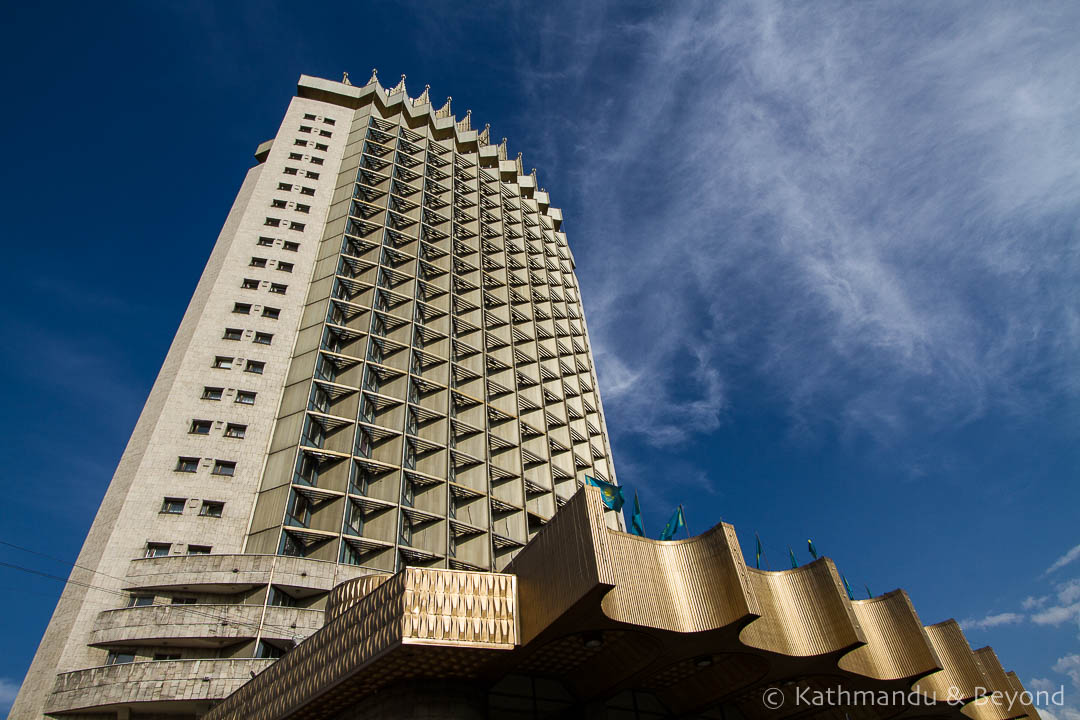
Palace of the Republic
Previously named the Palace of Culture, this monumental structure was originally planned and opened as part of the 100th-anniversary celebrations of the birth of Vladimir Lenin. Built in 1970, it was renamed the Palace of the Republic in 1991, the year Kazakhstan gained its independence from the Soviet Union and was predominantly used to host cultural events and the odd large-scale meeting.
A renovation project carried out in 2010-2011 that cost an estimated 10.4 billion tenge (just under US$31.5 million), meant that the cost of maintaining the building increased thirteen-fold. From what I can understand (although I’m not 100% sure of the facts), this encouraged the government to sell the building into private ownership. In November 2015, it was announced that the Palace of the Republic would reportedly be sold for just 1 tenge. I can’t find out any further information as to whether the sale actually went ahead or not, or indeed why the building was up for sale for such a minuscule amount in the first place.
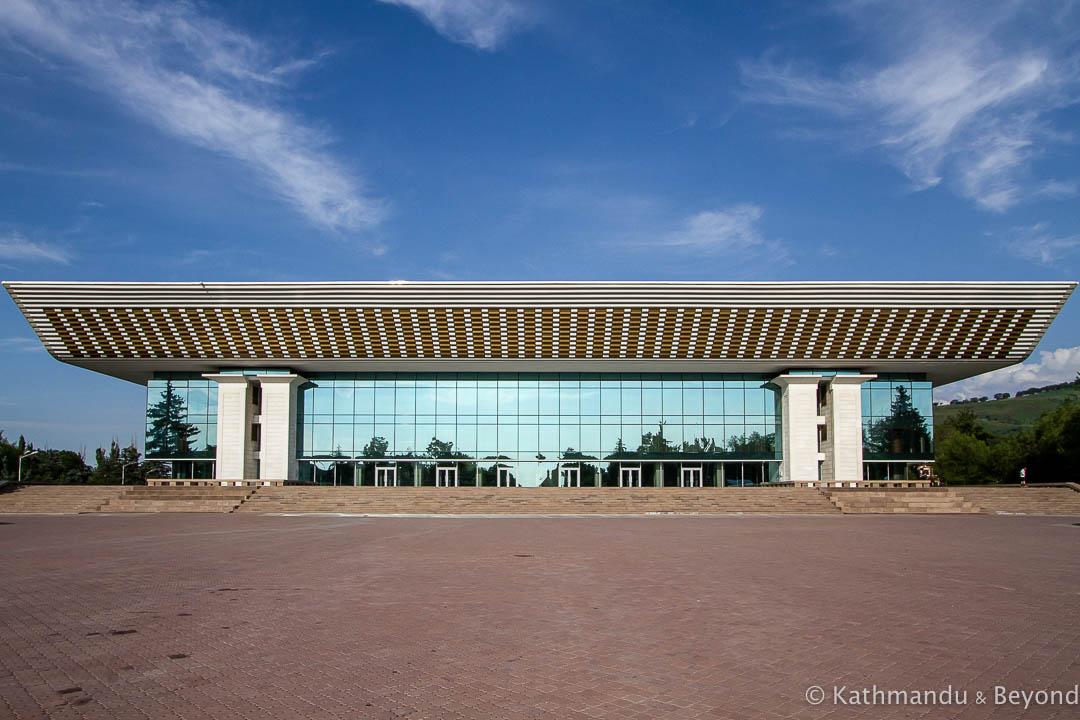
Arman Cinema
I’m not sure if this two-story building started life as a cinema or not but it is certainly a popular cinematic venue these days. Apparently, even the current president of Kazakhstan has been known to sit himself down with an oversized bucket of popcorn and enjoy a movie or two at this sort of art-deco-looking cinema. It caught our eye because of the stirring Soviet-era mural on the building’s side-facing wall.
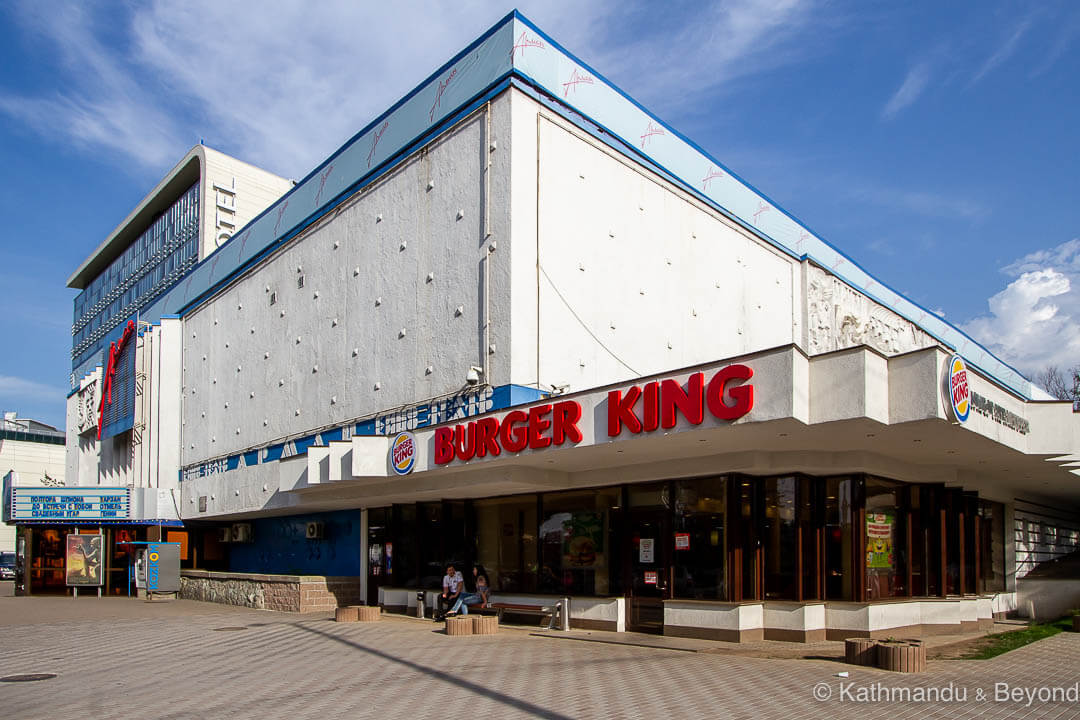
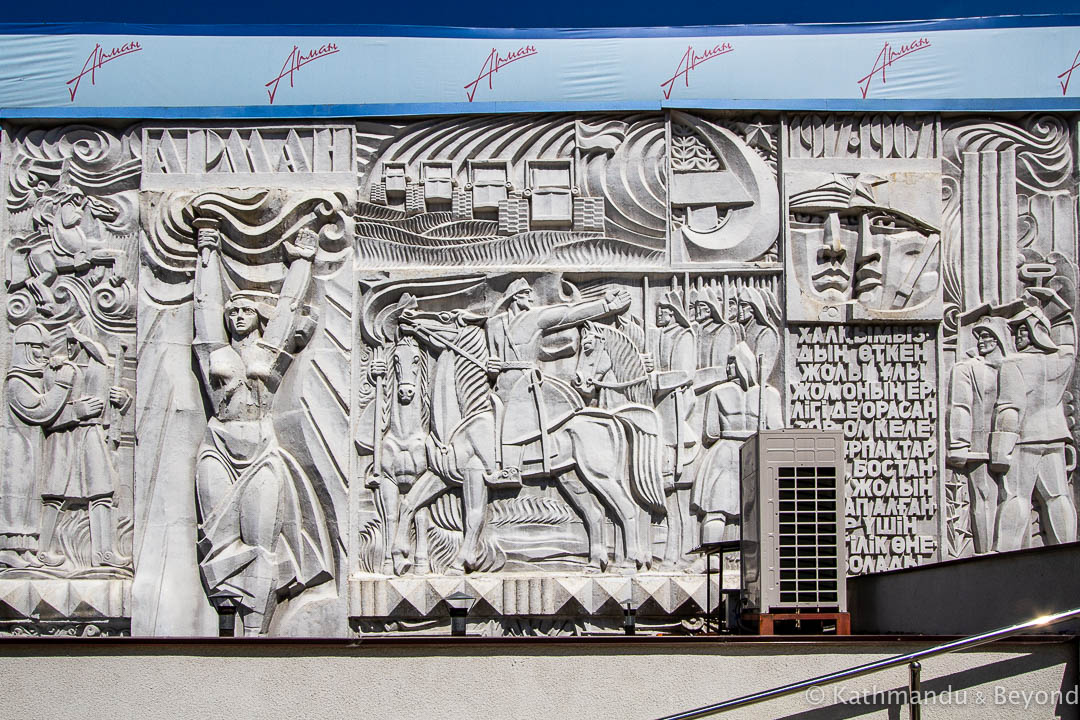
Republican School Children’s Palace (Palace of Pioneers)
The Pioneer movement was pretty much Boy Scouts and Girl Guides for communists (think Comrade rather than Akela or Brown Owl) and the Palace of the Pioneers was where they hung out and did their thing. Like most other Pioneer Palaces throughout the former Soviet Union and the Eastern Bloc, the one in Almaty later changed its name to the Republican School Children’s Palace but the principal use of the building remains the same and children congregate there for cultural, sporting and creative events on a regular basis.
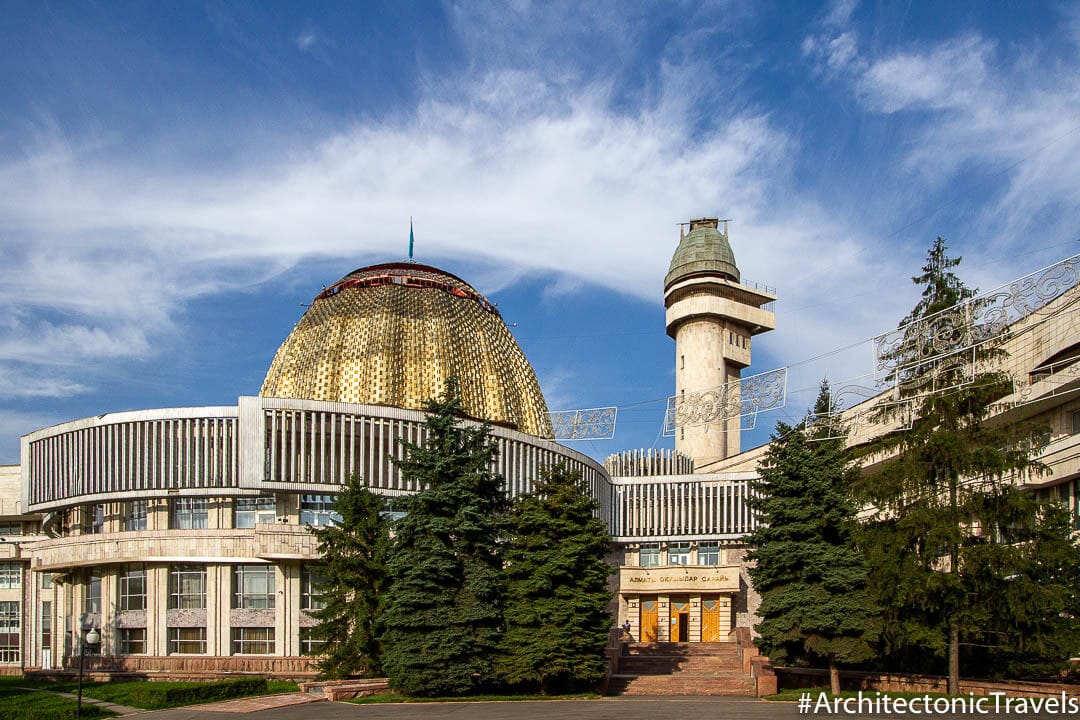
The Hotel Kazakhstan, the Palace of the Republic, the Arman Cinema and the Republican School Children’s Palace are all close to each other and located on Dostyk Avenue, a major thoroughfare in the eastern part of the city.
Kazakh State Academic Drama Theatre (Auezov Theatre)
Standing out in sharp contrast to anything else around it, the Kazakh State Academic Drama Theatre, more commonly known as the Auezov Theatre, is an imposing Soviet-era building dating back to the early 1980s. The origins of the theatre can be traced back to 1925 when it was originally located in the city of Kyzylorda. Back then, Kyzylorda was the capital of the Kazakh Autonomous Socialist Soviet Republic (Kazak ASSR) but when the status of capital moved to Almaty in 1937, the theatre moved as well.
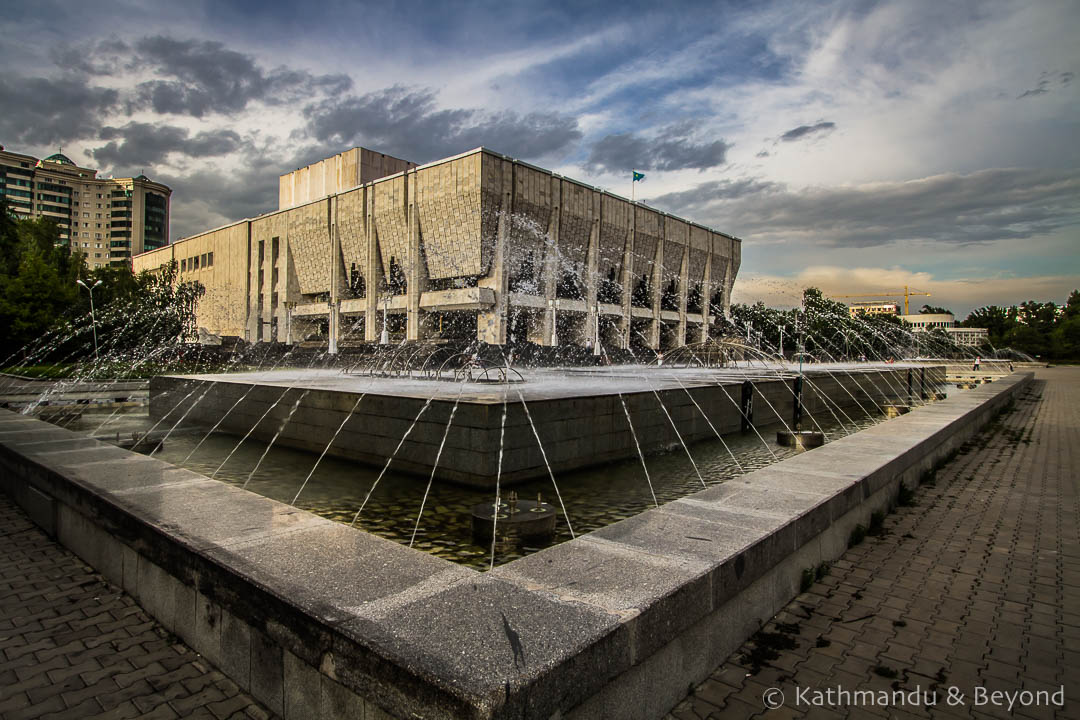
Kazakh State Circus
Over the road from the Kazakh State Academic Drama Theatre, the Kazakh State Circus was built in 1972 and resembles a huge Kazakh yurt. Like other State Circuses in the former Soviet Union, the one in Almaty still puts on regular performances. With a starting price of just a 1000 tenge (US$3.00) for a ticket and a show that lasts approximately three hours, the Kazakh State Circus remains a popular venue for locals and visitors alike and is good value for a city that is generally quite expensive.
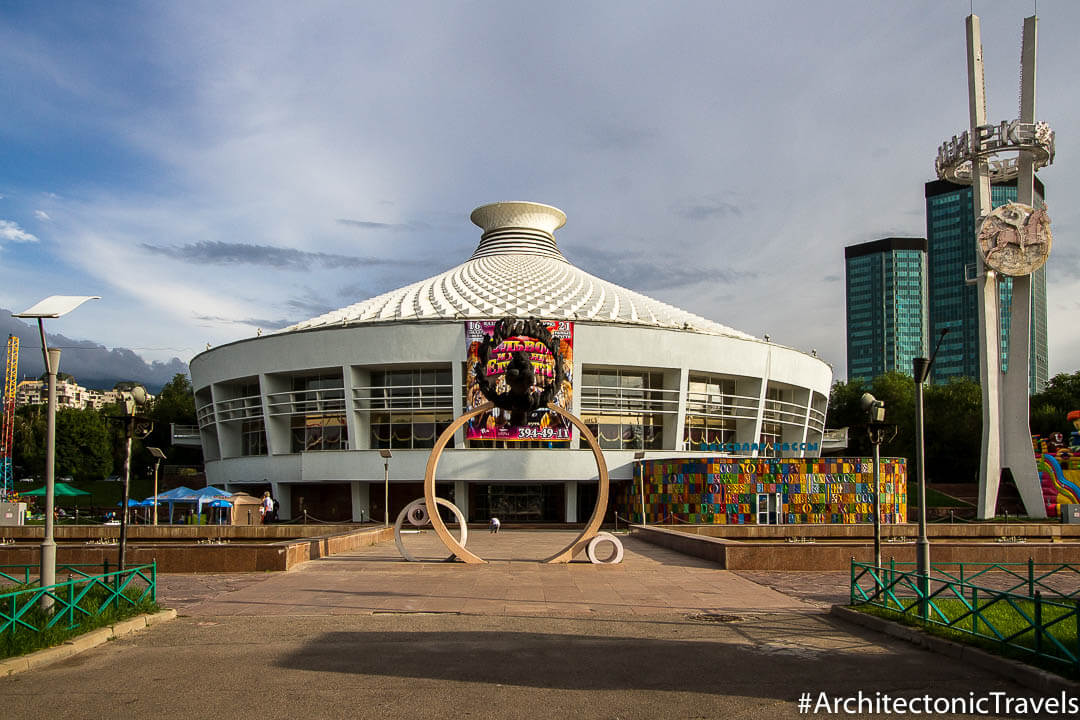
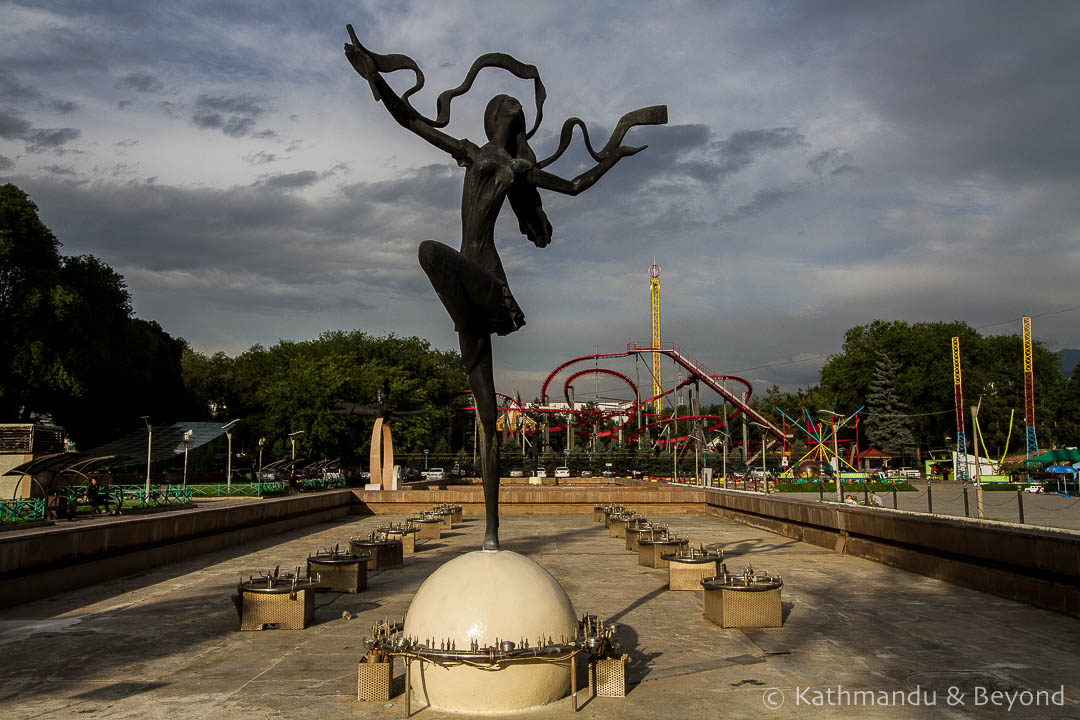
Wedding Palace
You still find Wedding Palaces in many ex-Soviet cities. The Wedding Palace played a compromising role in Soviet society. Officially, religion was banned in the Soviet Union but the authorities realised that even staunch comrades needed to get married, register the deed etc. and hence the establishment of the Wedding Palace. They are not dissimilar in function from what we call the registry office here in the UK, although the design of the latter is often far more conventional. Wedding Palaces, like the one in Almaty, are still in use but with more religious tolerance these days, they are not as popular a wedding venue as they once were.
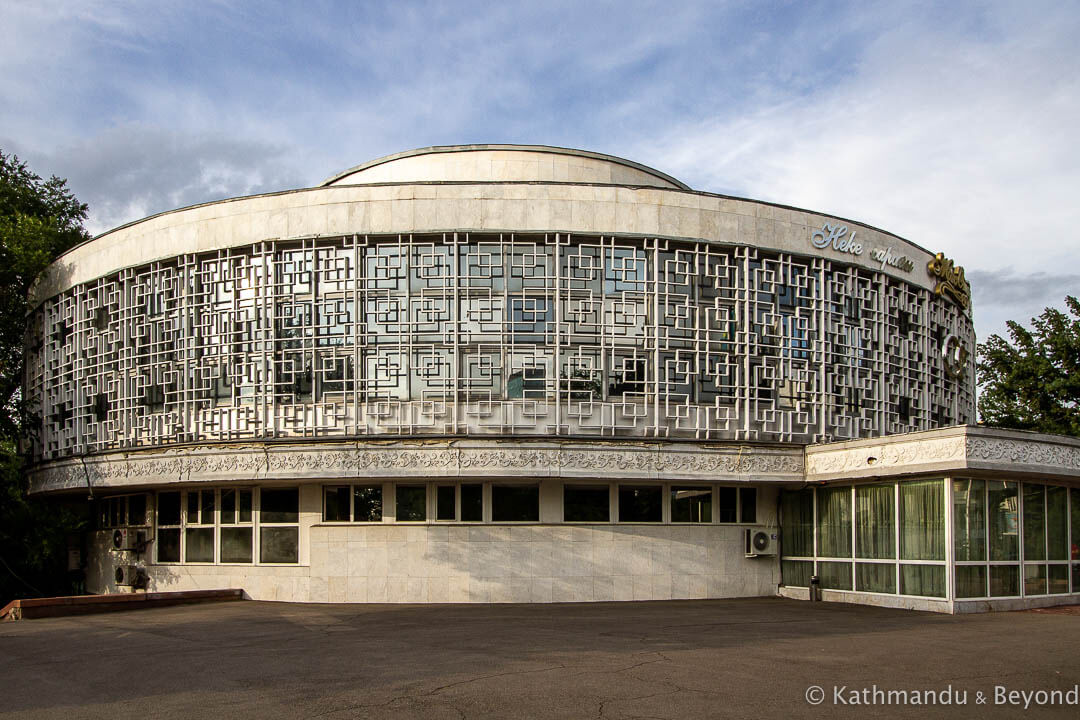
The Kazakh State Academic Drama Theatre, the Kazakh State Circus and the Wedding Palace are all located on Abay Avenue, near the Esentai River and very close to each other.
Independence Monument and Republic Square
Almaty’s large, Soviet-created Republic Square has played host to many military parades, sporting events, national celebrations and festivals as well as demonstrations and mass rallies. At its centrepiece is the 28-metre high Independence monument, which is flanked by two 16-storey Soviet towers, both of which are topped with a massive advertising billboard. Around the edge of the square are colossal, governmental buildings including the City Council and the former Presidential Palace, which is now used to house municipal offices.
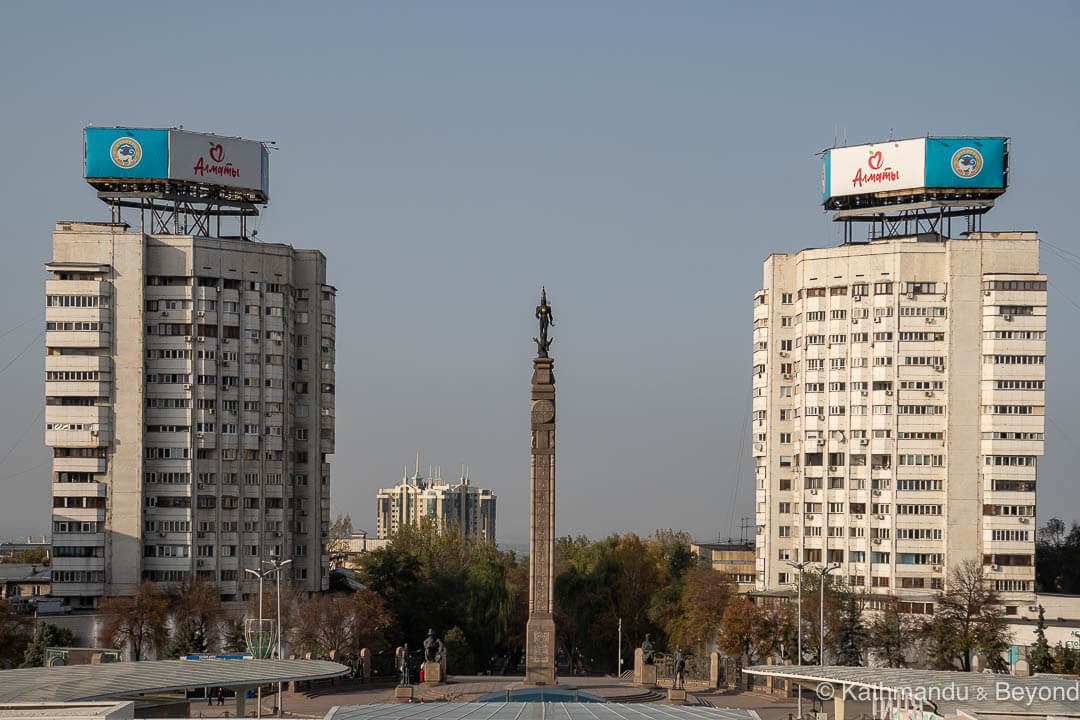
Dawn of Freedom Monument
Erected in 2006, the Dawn of Freedom monument is not a Soviet-era memorial but it does commemorate an event that took place during that time. On 17th December 1986, at least two hundred people were killed by police when riots broke out in Republic Square. The rioters were protesting against the dismissal of Dinmukhamed Kunayeva (mentioned above and responsible for most of the architecture described in this post) and the appointment of a non-Kazakh, Gennady Kolbin, as his replacement as head of the Communist Party in Kazakhstan. The disturbance was brutally put down by the authorities and the monument remembers those who lost their lives during the course of the event.
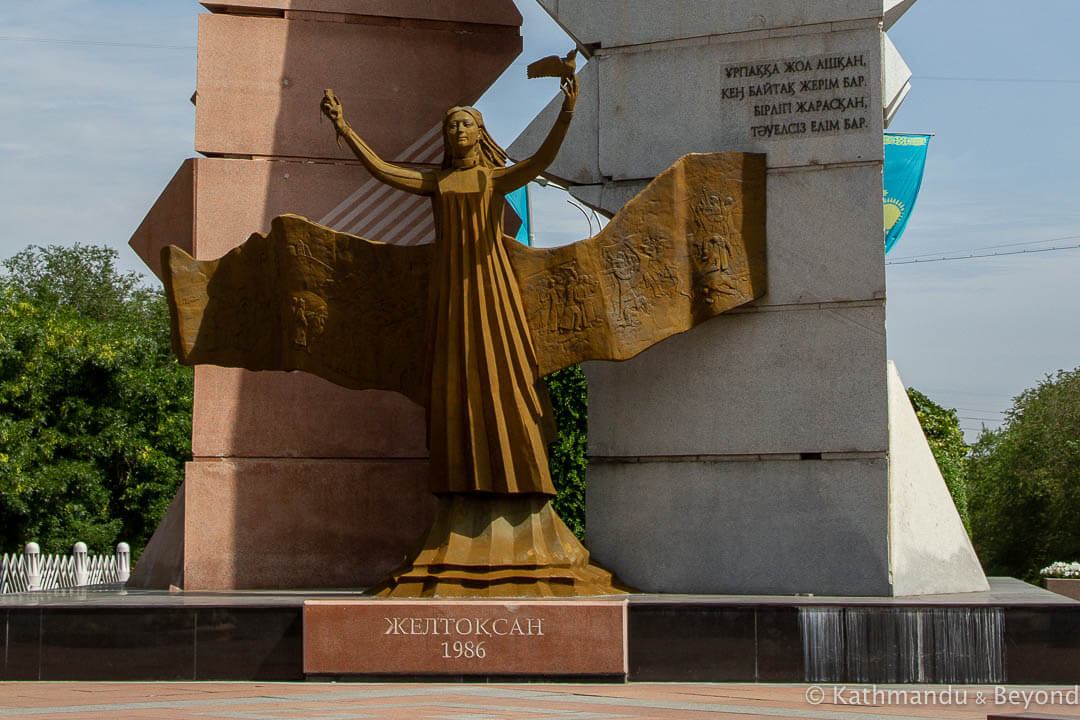
Hotel Alma-ata
Located close to the Abay Opera House, on the corner of Kabanbay Batira Panfilov Street, the Hotel Alma-ata is a stalwart from the Soviet period. Bright blue in colour and curved in shape, the hotel doesn’t look like it has weathered quite as well as the Hotel Kazakhstan (see above) but we thought its 1960s exterior looked rather sleek and by all accounts, the rooms and the service aren’t too bad.
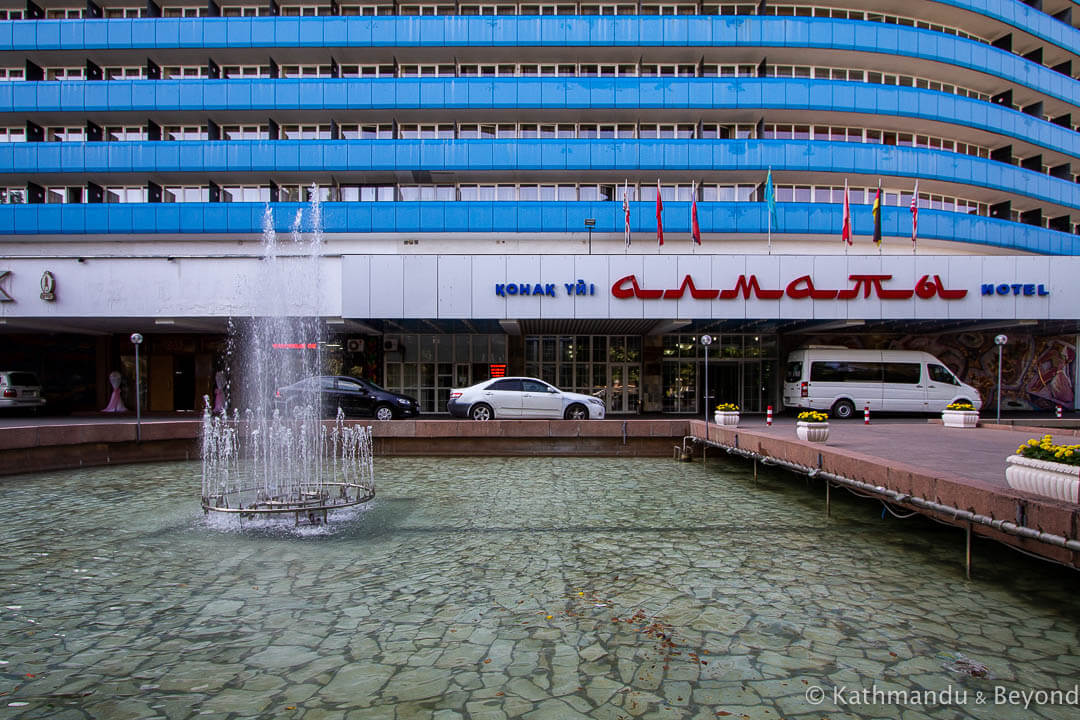
Memorial of Glory (Memorial to the 28 Panfilov Guardsmen)
This Soviet-era war memorial, which is a classic of its time, is located in Panfilov Park and honours twenty-eight soldiers of predominately Almaty and Bishkek descent who died in November 1941 repelling a German attack in a village outside Moscow during World War II.
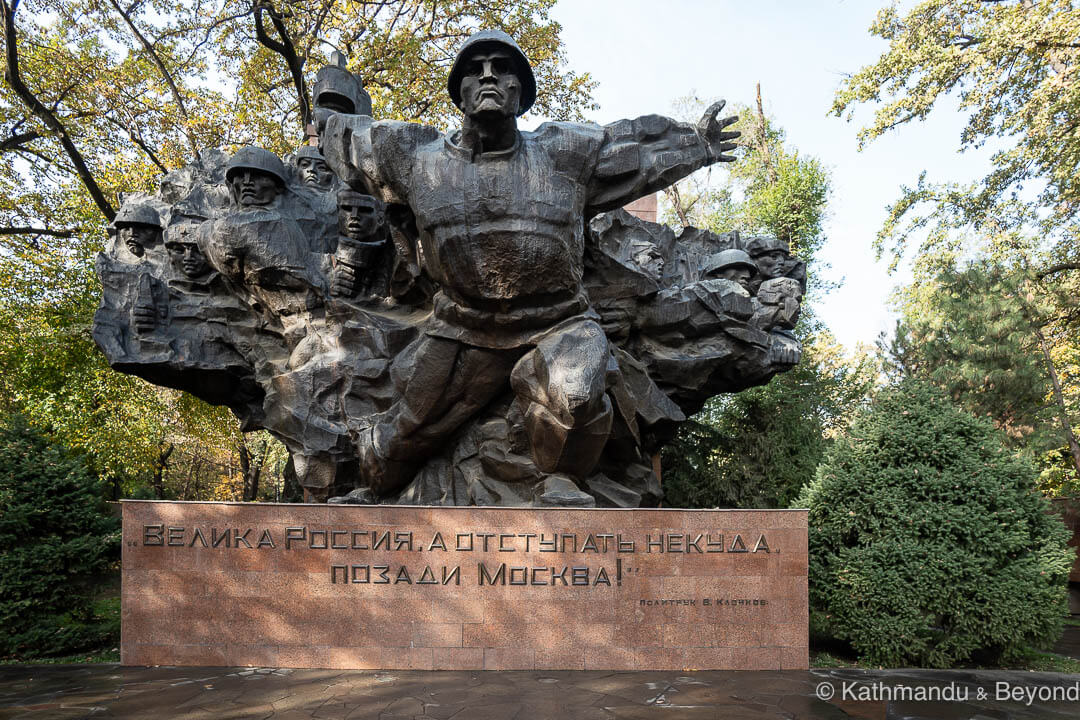
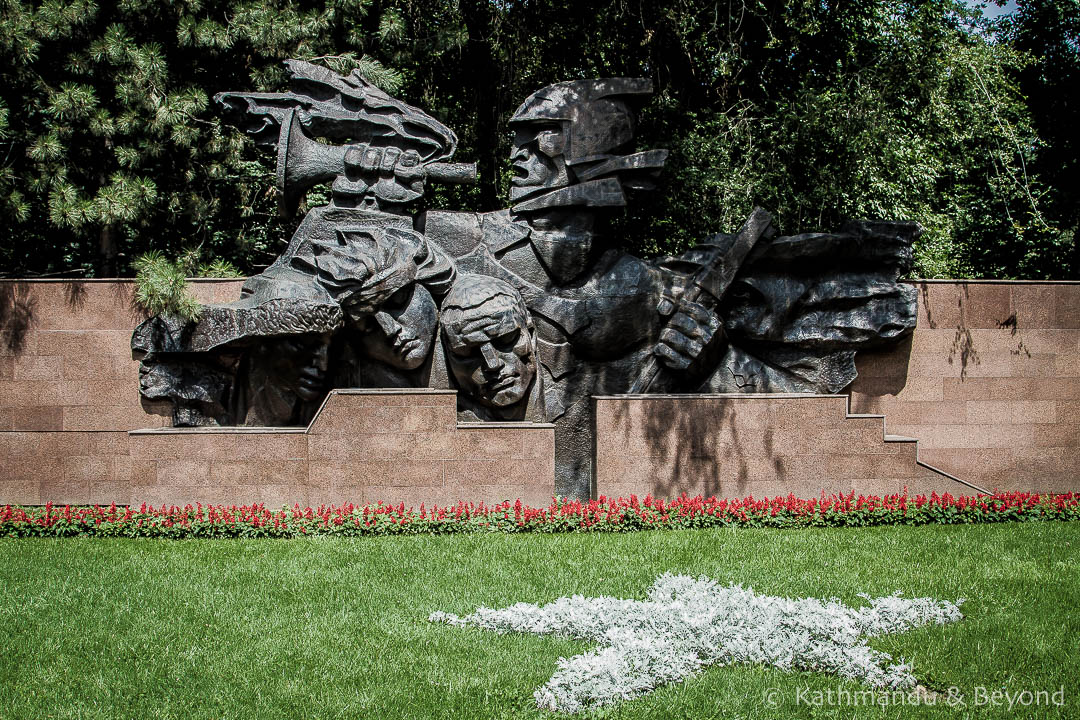
IF YOU ENJOYED OUR GUIDE TO SOVIET-ERA ARCHITECTURE IN ALMATY, PLEASE SHARE IT
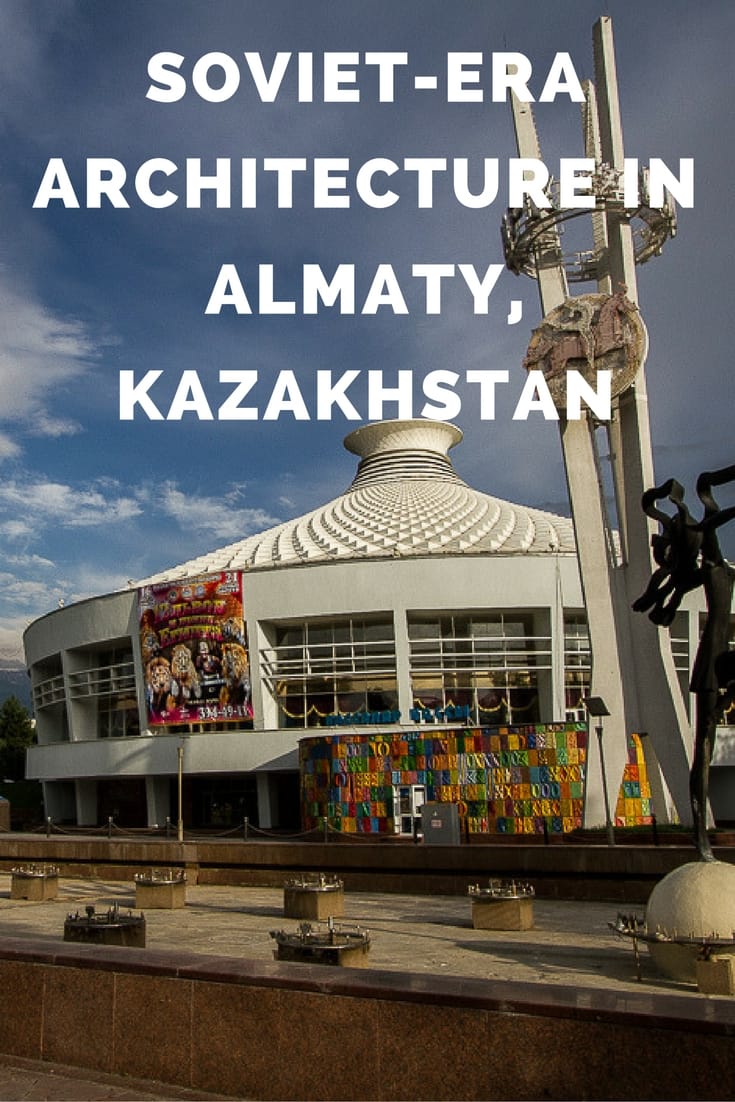
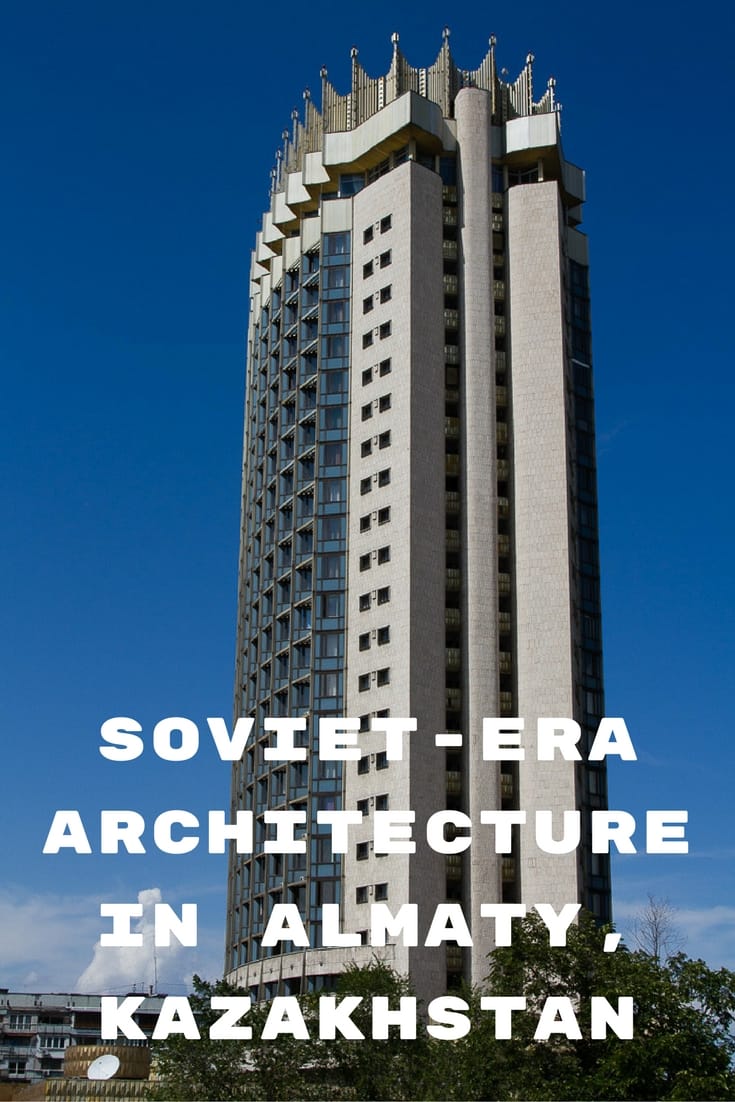

I am gratified to find that there is at least one person today who remembers the legacy and celebrates the achievements of Dinmukhamed Kunayeva. I can barely wait to see them myself.
I can’t work out if you are taking the Michael (as we say in England) or not? Me thinks you are eluding to my obsession with all thinks Soviet and concrete related but on the other hand, may be I have converted you and it is now a genuine interest …
I’ve always been interested in architecture and have certainly enjoyed your posts on the buildings that interest you (just finished reading the post on the ruined villas in Kep in Cambodia), but I have in fact noted what you properly call your “obsession” with Soviet and concrete architecture. Nothing wrong with that. You could have worse obsessions. By the way, I have heard the expression “taking the mickey” of someone in the sense you use for “taking the Michael.” Same expression, with “Mickey” a diminutive of “Michael”?
Glad you are enjoying them. I think we have got to tackle Russia at some point. Discovering the former Soviet Union without visiting the Motherland is a bit remise!
I wanted so badly to stay in the Hotel Almaty – but it was sadly out of our price range.
And that Wedding Palace is maybe my favorite Wedding Palace? Ugh, it’s so hard to choose. Hoping to see a few more in Ukraine this Summer. Kiev’s looks pretty fun.
I know what you mean, it would have been fun to stay there! I personally prefer the Wedding Palace in Bishkek and if you want to see the one in Kiev, you need to walk down past the circus, which is also worth seeing. Go in the morning if you want the best light.
I love these Soviet cities. I love the architecture. I love the feel. I hopefully will be in Almaty later this year, and will definitely be retracing your steps. A great guide to what I hear is a very cool city.
Thanks and you heard right, Almaty is a cool city. Central Asia isn’t normally about the cities but in the case of Almaty it’s a different story. The place is welcoming and have a pleasant atmosphere. That said, Bishkek has its fair share of interesting Soviet architecture. I’ll get around to showcasing it on the blog one of these days!!
such a cool and insightful blog. i`m glad i found this site.
That’s good to know. Thank you!